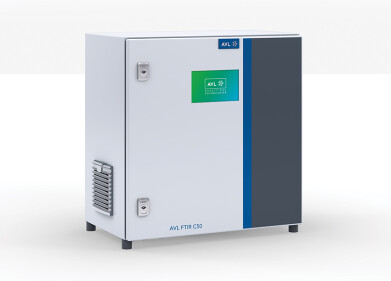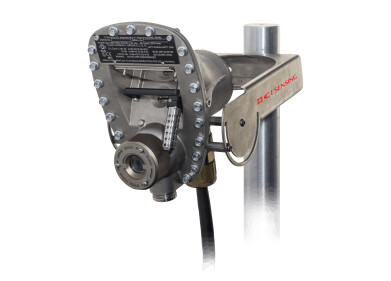Air Monitoring
UK school uses AQMesh to measure local air quality
Sep 13 2017
Cleves School has used two AQMesh pods to measure pollution gases at the primary school’s entrance. Dr. Edward Salter led the project which aimed to understand exposure of the young children (aged 7-11) to dangerous pollutants, particularly nitrogen dioxide (NO2) and ozone (O3).
The monitoring took place during the summer term in Weybridge, Surrey, and ground level O3 exceeded 100µg/m3 on a few occasions during the particularly high temperatures in early June. A daily pattern of gas peaks coinciding with school pick-up and drop-off was noticeable for nitric oxide (NO) but less so for NO2. NO2 levels increased later in the day both as a result of oxidation of school-related NO and from general traffic locally, with elevated levels of NO2 up to the end of the evening commute, probably from traffic on local and major roads nearby. The monitoring also showed 15-30 minute spikes from diesel buses or cars parked very early in the morning or late at night with their engines running constantly, as well as from local events at the weekend, when the air quality is otherwise generally seen to improve considerably.
The project set out to determine whether pollution peaked at school drop-off and pick-up times in order to encourage cleaner methods of getting to and from school, after a transport assessment for the expansion of the school highlighted that traffic peaked around 8.30am and 3.15pm for approximately 30 minutes. The school is reviewing findings and will consider a number of mitigation measures, including timing exercise sessions for periods of lower pollution.
AQMesh monitors were installed to monitor NO, NO2, NOx and O3 at each school gate during these peak traffic periods. “There is clearly an effect between pollution levels and travelling to school by car. If I were to do this again I would ask to monitor to additional gases, VOCs and particulates”, said Dr. Edward Salter. AQMesh can currently measure PM1, PM2.5, PM10, CO and SO2, as well as the three gases in this study, and options for H2S and CO2 are due to be released by the end of 2017.
“The AQMesh pods were simple enough for the school to handle, which is not true of all such equipment”, added Dr. Salter.
AQMesh was designed to offer a robust and easy-to-use air quality monitoring system that can deliver localised real-time readings, improving the accuracy and scope of gathering air quality data in order to support initiatives to reduce air pollution and its risk to human health.
AQMesh has been used in various education-related projects globally. At the simplest level AQMesh offers an accessible way for schoolchildren to engage with local air quality issues. Used in conjunction with wind speed and direction information, local real-time data from AQMesh can be used to distinguish between local sources of pollution, which can be managed, and more distant sources of pollution which require a different approach. AQMesh data can also be used to improve the accuracy of air quality models at the local level.
For more information please click here.
Digital Edition
AET 28.2 April/May 2024
May 2024
Business News - Teledyne Marine expands with the acquisition of Valeport - Signal partners with gas analysis experts in Korea Air Monitoring - Continuous Fine Particulate Emission Monitor...
View all digital editions
Events
Jul 10 2024 Birmingham, UK
Jul 21 2024 Cape Town, South Africa
Australasian Waste & Recycling Expo
Jul 24 2024 Sydney, Australia
Jul 30 2024 Jakarta, Indonesia
China Energy Summit & Exhibition
Jul 31 2024 Beijing, China




















